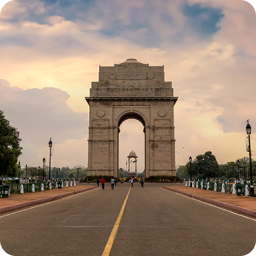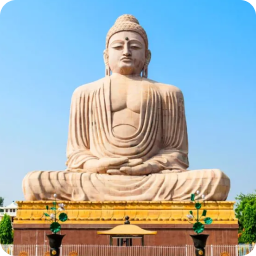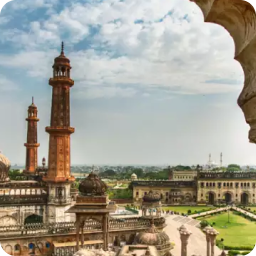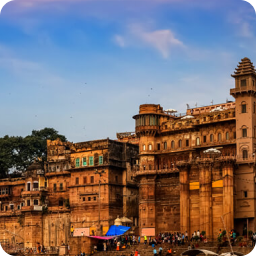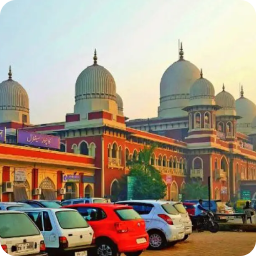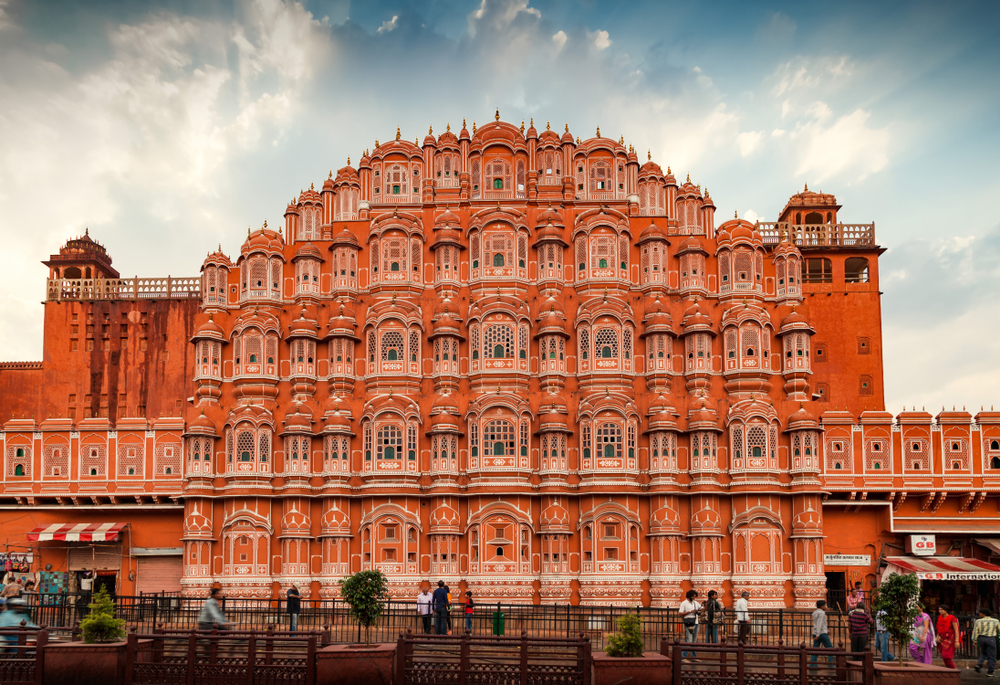|
Organised Crime And Terrorism: Aspects, Fctors, Challenges |
To prepare for INTERNAL SECURITY for any competitive exam, aspirants have to know about Linkage between Organised Crime and Terrorism. It gives an idea of all the important topics for the IAS Exam and the Economy syllabus (GS-III.). The linkage between Organised Crime and Terrorism terms are important from Economy perspectives in the UPSC exam. IAS aspirants should thoroughly understand their meaning and application, as questions can be asked from this static portion of the IAS Syllabus in both the UPSC Prelims and the UPSC Mains exams. Even these topics are also highly linked with current affairs. Almost every question asked from them is related to current events. So, apart from standard textbooks, you should rely on newspapers and news analyses as well for these sections.
Organised crime: Introduction
- Understanding the organized criminal group as per UN convention against Transnational Organised Crime defines organized criminal group as:
- A group of three or more persons that was not randomly formed;
- existing for a period of time;
- acting in concert with the aim of committing at least one crime punishable by at least four years’ incarceration;
- In order to obtain, directly or indirectly, a financial or other material benefit.
- Organised crimes are done with the motive of monetary gains by illegal means. Organised crimes are transnational in nature. Their presence is a great threat for the country’s security.
- Definition of organised crime as per Maharashtra control of organised crime act, 1999.” Organised crime” means any continuing unlawful activity by an individual, singly or jointly, either as a member of an organised crime syndicate or on behalf of such syndicate by using violence or threat of violence or intimidation or coercion, or other unlawful means, with the objective of gaining pecuniary benefits, or gaining undue economic or other advantage for himself or any person or promoting insurgency.
- Interpol has defined organised crime as “Any group having a corporate structure whose primary objective is to obtain money through illegal activities, often surviving on fear and corruption”
- Organised crime (OC) is highly sophisticated, diversified, and widespread activity that annually drains billions of dollars from the global economy by unlawful conduct and illegal use of force, fraud, and corruption.
- Organized criminal activities weaken the stability of the nation’s economic system, harm innocent investors and competing organizations, interfere with free competition, seriously burdens interstate and foreign commerce, threaten the domestic security and undermine the general welfare of the nation and its citizen
Organised Crime: Traditional and Non-Traditional Aspects
- Traditional organised crime (illicit liquor trade, betting, gambling, extortion etc.).
- Non-traditional organised crime (money laundering, circulation of fake currency, Hawala transfer etc.)
Organised crime thrives in the areas where enforcement of law and order is not proper.
Organised Crime: Factor helping in growth
- Increasing demands of illegal goods in the global market like trade of Human organs, endangered wildlife, drugs etc.
- Geographical terrain and open borders.
- Globalization has brought new opportunities and markets for these groups.
- Unholy nexus between politicians, bureaucrats and criminals
- Criminalisation of politics.
- Technology also helped them to operate safely hence reducing their risk.
- Return compared to the risk factor is very high.
- India’s proximity with drug producing regions like Golden Crescent in the West and Golden Triangle in the East.
- The globalization of the economy has definitely helped the crime syndicates carry out their illegal activities across the borders with great ease. This has been further facilitated by the phenomenon of ‘digital money’. Such organizations, very conveniently, find safe havens outside the country.
Organised Crime: Variants
- Arms trafficking.
- Drug Abuse and Drug Trafficking
- Narcotics trafficking
- Human smuggling
- Money laundering
- Illegal Immigration
- Contract Killings
- Prostitution
- Fake currency
- Gold smuggling
- Maritime piracy
- Extortion
- Cybercrime etc.
Organised Crime: Challenges
- No Specific law: India does not have any specific law to deal with organised crime. It depends on various provisions of IPC and other laws which are scattered.
- Anonymity of leadership: As organized criminal groups are structured in a hierarchical manner, it becomes difficult to identify these leaders. Also, such groups keep changing their leadership to avoid law enforcement agencies.
- Lack of Resources: According to the Constitution, police is a state subject. But many states are not in a position to invest resources to deal with organised crime.
- No Central Agency: India does not have any central agency to coordinate with state agencies, for combating organised crime.
- Trans-national presence: Some of the crimes are planned outside the country. Tough terrain in India’s neighborhood provides safe havens to these organized criminals.
- Poor criminal justice system: There are 3 crore pending cases in the Indian judiciary. The delayed justice and poor investigation by police also gives opportunity to these organized criminals to exploit the system.
Organised Crime: Suggestions
- We should also create one central agency mandated under the law, to coordinate with state agencies for all the issues related to organised crime.
- Improving intelligence is the most important task because organised crimes are done anonymously. Such anonymity can only be traced with the help of strong local intelligence.
- Cooperation of International organizations, governments and civil society is needed to curb the crimes with no borders.
- Central government should allocate more resources to the state government to improve their criminal justice system.
- Police department should be made truly independent to deal with organized criminals.
- Improving the criminal justice system.
- Separating law and order functions and investigation functions of police.
- Unemployment should be reduced by giving priority to job creation and skill development.
Understanding the link between the organised crime and Terrorism:
- Terrorism and organised crimes (money laundering, drug trade, weapons trade, human trafficking, fake currency) are conjoined twins that pose a great threat to the world through their syndicate and their deadly effects.
- To carry out terrorist activity a lot of money is required, so terrorists engage in organised crime to fund their terrorist activity. Organised crime is the main source to generate money for terrorists.
- Due to the transnational nature of organised crime they host the terrorist and create opportunities for their growth in new areas.
- Terrorist groups use the established network of organized criminal groups for transfer of money.
- Organised crime groups provide smuggled arms and explosives to terrorist groups in exchange terrorist groups provide protection, drugs etc.
- Terrorist organizations also mobilize funds by providing couriers of illegal drugs and arms etc. for various organized criminal groups.
They have a symbiotic relationship and their strong presence can be seen in the areas having ineffective governance. But all organised crime is not a terrorist act and not all terrorist acts are organised crime.
Examples showing relationship between organised crime and terrorism:
- Human trafficking, drug trafficking and gun running are some of the other criminal activities that have been common sources of funds for terrorism.
- In the Northeast, extortion is the fundamental basis for funding all forms of terrorism. In addition to this, kidnapping has been used extensively for spreading terror and raising funds.
- In J&K, counterfeit currency has been a major source of funding terrorism. Money laundering plays a significant role. Hawala (money laundering) transactions take place swiftly and effectively in Kashmir.
- In the Maoist terror movements, extortion is yet again a common phenomenon. They have also indulged in robberies of banks to fund their movement.
Similarities Between Organised Crime and Terrorism:
- Both use extreme violence and the threat of reprisals. The violent activities include use of kidnappings, assassinations, and extortion.
- Both operate secretly, though at times publicly in friendly territory.
- Both defy the state and the rule of law. They present a great security threat to the nations.
- Both are highly adaptable, innovative, and resilient.
- They both have provided social services, though this is much more frequently seen with terrorist groups.
Linkages Between Organised Crime and Terrorism:
- Terrorist groups need arms and money to fight against security forces. The organized criminals and terrorist groups become clients of each other. Organized criminals groups smuggle arms, drugs, cattle, humans to generate money for terrorist groups.
- Terrorist groups always try to destabilize the country and bring down the morale of security forces. When the terrorist groups are unable to confront the security forces directly, they turn towards organized criminals. Thus organized criminals indirectly help these terrorist groups.
- Organized criminal groups generally establish strong communication networks. These organized groups act as eyes and ears of the terrorist groups.
- Terrorist organizations in India, especially in the northeast, mobilize funds by becoming couriers of illegal drugs and arms and at times even human beings from one point to another within the country.
- Terrorists are always in need of money. As they fail to mobilize large amounts of money, they take help of organized criminals to exchange counterfeit currency with arms.
Penetration of Organised crime and their link with terrorism in different states of India
| Jammu and Kashmir |
|
| North-East Region: |
|
| In Left wing extremism area: |
|
Another perfect example of this link of terrorism and organised crime can be seen in the Bombay blast of 1993. The groups like D-company come in light.
Difference between organised crime and terrorism
| ORGANISED CRIME | TERRORISM |
|
|
Organised crime and terrorism: Breaking the Nexus
With increasing international pressure, increased understanding between governments of different countries the state funding of these terrorists is going down day by day so, for financial viability their link with organised crime is increasing.
Combating Organised Crime: Strategic Measures and Legal Reforms
- Stringent laws are required like Gangster act to tackle organised crime.
- Better intelligence and along with good military support.
- Disrupting the networks of terrorists and syndicates of organized criminal groups.
- Multilateral arrangements applied in which terrorist organizations and organized criminal networks and their link can be broken by intelligence, local police and with help of central government departments.
- Loopholes in the laws which are exploited by the organized criminal networks should be removed.
- Capacity and better training to law enforcement agencies of the country.
Government’s effort to deal with organised crime in the country
- Various laws under IPC and CRPC.
- Enactment of Maharashtra control of organised crime act, 1999.
- The unlawful activities prevention act of 1967.
- Various measures related to prevention of these crimes in border areas and coastal regions of the country.
- Strengthening of law enforcement of agencies.
But as organised crimes are transnational in nature, collective efforts are needed.
Organised Crime: Initiatives Taken
- UN convention against Transnational Organised Crime along with three other protocols i.e. trafficking in persons especially women and children, smuggling of migrants, illegal manufacturing and trafficking of firearms.
- UN office on Drug and crime for better enforcement of law and capacity building.
- Creation of a financial action task force to deal with issues of money laundering and terror funding.
Conclusion:
The threat of organised crime is increasing day by day as organised crime feeds over instability and weak law enforcement so , strengthening the governance mechanism is the key. India must take its immediate neighbor in confidence that their land must not be used for organised crime and strengthening the regional organization.
HUMAN TRAFFICKING
- World over, human trafficking is labeled as the third most lucrative illicit trade, after drugs and arms.
- According to the UN Office for Drugs and Crime, South Asia, with India at its center, is the fastest-growing and second-largest region for human trafficking in the world, after East Asia.
- Even according to government data released recently, almost 20,000 women and children were victims of human trafficking in India in 2016, a rise of nearly 25% from the previous year
Human Trafficking: Reasons for increase
- Increased public awareness of trafficking related crimes through sustained campaigns by government and civil society groups. Thus, more victims are coming forward and reporting.
- Poverty: Thousands of poor people are trafficked to India’s towns and cities each year by traffickers in lure of good jobs.
- Porous international borders – Because of this, border states especially sharing borders with Bangladesh and Nepal have become human trafficking hubs
- Use of technology: Recently, a complaint has been filed with the Anti-Human Trafficking Unit of CBI to probe what appears to be the biggest and most sophisticated online sex trafficking ring spread across several states where network of traffickers and middlemen operating through Facebook and encrypted messaging services, including WhatsApp
- Unemployment: As unemployment is rising over the years, people tend to sell their own wives and girl child for the sake of money. West Bengal’s 24 Pargana district constitutes 24% of human trafficking cases.
- Commodification of women: In patriarchal societies women are seen as objects or commodities. Women are the worst victims of human trafficking. Even the terrorist organizations are involved in women trafficking for the purpose of physical pleasure.
- Child labour: Child labour is a major issue in poor countries like India and other South Asian countries. As children can be paid less wages, the children are trafficked to employ them in hotels, mines etc.
- Growing syndicate of beggars: Earlier begging was done on an individual basis. But now it is observed that even beggars are forming groups, they target specific areas. Such beggars groups generally resort to child trafficking. These children are used for begging to gain the sympathy of the people.
The government had enacted various laws to deal with this issue but there are following issued with the existing system:
- Cross-national victims are victimized twice. If a victim and trafficker are arrested in India, they are both charged under Foreigners Act, 1946. According to the Act, if an offender is a foreigner, he/she should be punished under this Act and deported. As a result, the trafficked person is treated as a criminal for his/her unlawful presence in India.
- Not comprehensive law: Indian laws do not target traffickers and their associates or penalize them adequately. The penal clauses are not used adequately to bring the clients to justice.
- Lack of awareness of provision: The trafficker can be charged under Section 366B of the IPC which states that importation of a female below the age of 21 years is a punishable offense but it is rarely implemented due to unawareness of police.
- Delay in the verification of the addresses of victims: May take as long as two or three years. The reasons for this include delay in confirmation by the Bangladesh government and Incorrect, incomplete, or vague addresses given by the trafficked persons at shelter homes.
Human Trafficking: Status of Drug Abuse and Drug Trafficking in India
As per a home ministry report there are around 40 lakh drug addicts in India. The most common drugs of abuse are ‘ganja’, ‘hashish’, ‘opium’ and ‘heroin’.
Some of reasons for Drug Abuse and Drug trafficking:
- Due to the presence of Golden Crescent and Golden Triangle in the region, India has been more vulnerable for narcotics trafficking and its abuse.
- India has Narcotics Drugs and Psychotropic Substance Act 1985, which provides minimum punishment of 10 years for offenses under this Act. But its Implementation by the states has been tardy.
- India has also signed bilateral agreements with the USA, UK, Myanmar, Afghanistan, UAE, Mauritius, Zambia, and the Russian Federation for ‘drug control’.
- Further the rise of Virtual Currencies like Bitcoin has also increased funding avenues for smugglers and drug traffickers.
- The abuse of pharmaceutical preparations like ‘buprenorphine’, codeine-based cough syrups and painkillers like ‘proxyvon’ within the country.
- Other Factors: Turf wars between various agencies, corruption, intelligence failure, lack of manpower and infrastructure, poor drug detection training, and procedural delays are other factors that hamper the effectiveness of the country’s drug prevention efforts.
Drug trafficking: Impact
- Socio-Political Impact: Drug trafficking undermines socio-economic and political stability and sustainable development.
- Loss of Human lives: Drug trafficking and abuse has continued its significant toll on valuable human lives especially and loss of productive years of many persons around the globe.
- Ever-growing prevalence of HIV/AIDS among North eastern states people has also been highlighted as one of major implications by UNODC.
- National Security: Involvement of various terrorist groups and syndicates in drug trafficking leads to threat to the national security and sovereignty of states by the way of Narco-terrorism.
Drug trafficking: Steps Undertaken by India
- Statutory Measures: India has enacted Narcotics Drugs and Psychotropic Substances Act, 1985 (NDPS Act) and Prevention of Illicit Trafficking of Narcotics Drug and Psychotropic Substances Act, 1988 through which the country is addressing various aspects of drug problem.
- International Conventions: India is signatory to all three UN Conventions namely, the Single Convention on Narcotics Drugs, 1962, the 1971 UN Convention on Psychotropic Substances and the 1988 UN Convention against Illicit Trafficking of Narcotics Drugs, Psychotropic Substances and has also supported the global efforts led by UN office on drug and crime (UNODC) to curb perpetrating drug menace.
- Inter-Governmental Initiatives: India has entered into various arrangements like Bi-lateral Agreements, Memorandum of Understandings with Nepal, Thailand and Myanmar, Joint Working Groups on Counter Terrorism and Judicial Cooperation with the countries in the region.
- India has formulated National Policy on Narcotics Drugs and Psychotropic Substances which has given equal emphasis on supply and demand reduction.
- New guidelines for grant of rewards to be paid to officers, informers and other persons in case of seizures of Narcotics drugs, Psychotropic substances were also issued recently.
- Ensuring physical security of the borders and coasts by strengthening patrolling and surveillance.
- Co-operating with voluntary organizations in the endeavor to prevent abuse of narcotics and synthetic drugs
- Other Initiatives: National Awards for institutions & individuals working in the field of prevention of drug abuse and creation of National Drug Abuse Helpline Number which helps the victims of drug abuse and their families in counseling and other aids.
Drug trafficking: Way Forward
- Synchronization and coherence among domestic laws of neighboring countries to deter drug traffickers and also for translational exchange of criminals.
- Developing Common strategies to tackle the emerging threat of drug trafficking through maritime routes.
- Further strengthening and upgradation of intelligence network, upgradation of surveillance equipment and future requirements such as the setting up of training academy and drug labs.
- the Narcotics Act may be amended to plug the procedural loopholes and to calibrate punishments by grouping the offenses.
- Demand reduction: The strategies should also include demand reduction along with supply reduction. Supply reduction would include enforcement activities while demand reduction would involve rehabilitation and de-addiction measures.
- Other measures: Investigative skills need to be honed and trials expedited; Inter-agency exchange of information amongst the countries by the quickest possible means coupled with expeditious extradition proceedings.
Drug trafficking: National Policy on Narcotic Drugs and Psychotropic Substances 2014
- Production of Concentrate of Poppy Straw (CPS) in India by a company or body corporate to enable India to retain its status of a traditional supplier of Opiate Raw Material (ORM).
- Gradual reduction of consumption of poppy straw by addicts.
- Use of satellite imageries for detection of illicit crop of poppy and cannabis and its subsequent eradication and development of alternate means of livelihood for cultivators.
- Allowing private sector production of alkaloids from opium which are at present produced only by Government Opium and Alkaloid Factories (GOAFs).
- Adequate access to morphine and other opioids necessary for palliative care.
- A time bound plan of action, in response to the recommendations of the International Narcotics Control Board.
| Also Read: Terrorism And Extremism: Types, Spread. Steps Taken |






